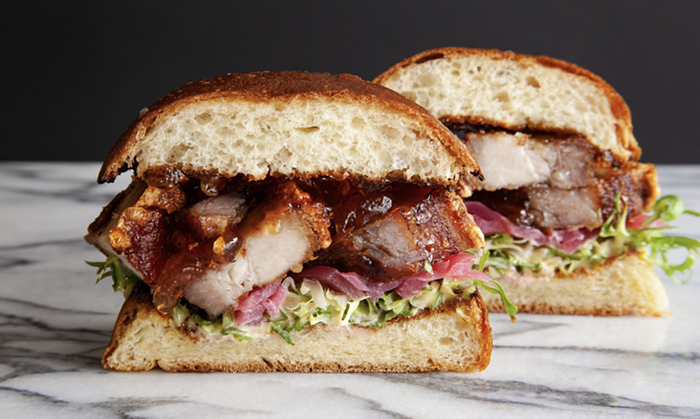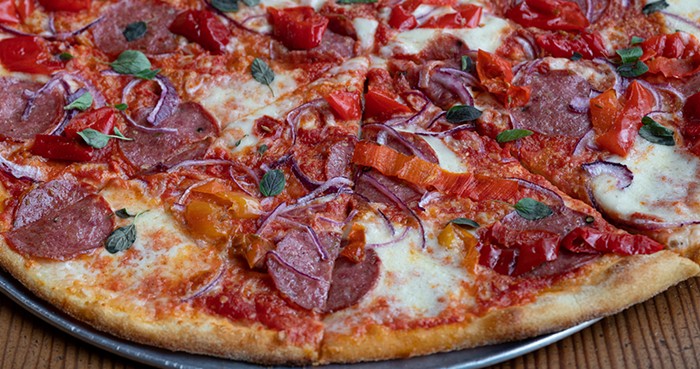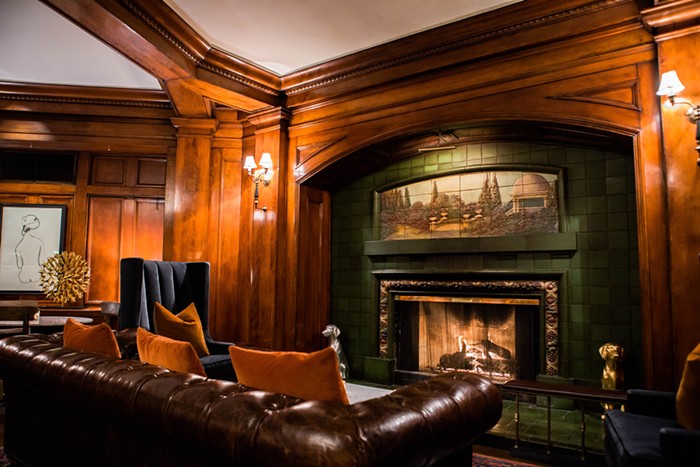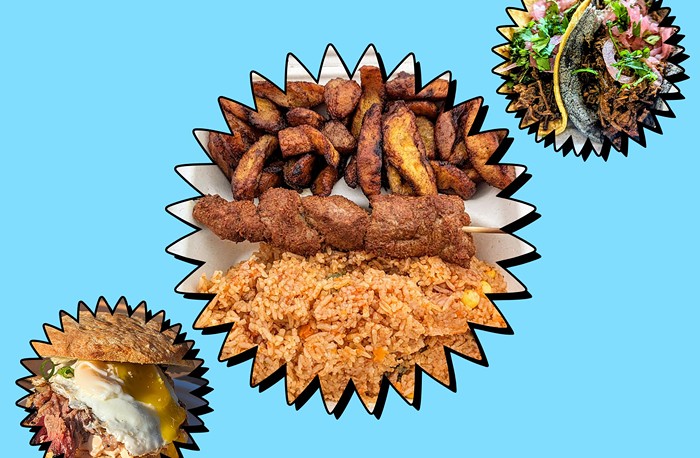
Not to shit on Jeff Brotman’s legacy, but we buy too much food. Indeed, our shopping system is pretty much set up to cajole us into doing so. Brotman's baby, Costco, offers us a shopping experience that seems more fit for hill giants than denizens of Capitol Hill. We are encouraged, bafflingly, to save more by buying more, being constantly assailed by "3/$5" or "Buy 5 Get 1 Free!" specials at the grocery store.
A refrigerator large enough to store several human bodies in is considered a standard kitchen appliance, when the average family of three could easily make do with a mini-fridge. As Gawker once quipped, "Your Giant American Refrigerator Is Making You Fat And Poor." And while our reputation as the world's political leader is rapidly waning, we haven't lost any ground as the world's foremost waster of food.
Unless you have two large adult sons, you probably do not need a 36-count bag of cinnamon raisin English muffins or a 5-lb block of American cheese. However, given that food has become the province of massive international corporations with shareholders to please, not people who are pretty good at sourcing rare cheese and want to make an honest living, it’s not surprising that we have such massive packaging sizes shoved down our throats. I’m guessing the refrigerator salesmen stocking Home Depot with stainless steel behemoths are, if not in on the con, at least pretty happy with it.
This is not how the rest of the world shops. When I spent two months living in Buenos Aires, I was most struck by the ubiquitousness of their food stalls. They do have mega-stores, but even these stores are packed into dense, walkable neighborhoods. And mostly they have stalls. So many stalls.
Within any given four-block radius, you are almost guaranteed to find a butcher, a fishmonger, three verduderias with wildly different prices, a corner store that sells beautiful cured ham, a bakery with amazing fresh pasta, and a couple gelato shops to top it all off. On my second visit, I lived above a man who sold boquerones by the pound, which stoked an addiction usually kept in check by the fact that in Seattle you have to buy a whole packet and have your parents co-sign for it.
Anyway, the point is that I shopped every day, I bought only what I needed for dinner that night, and I loved it. Apartments in Buenos Aires are, by virtue of how many goddamn people live there, already pretty much micro studios. All the fridges are mini fridges. You cannot buy more than you need, because you simply don’t have anywhere to store it.
Here, in the land of 28 cu. ft. fridges and QFCs, that style of stall-to-stall shopping is not really baked into our city planning. When we shop we fucking shop. We go to a big, bustling grocery store, we get enormous carts, and we fill them to the brim with diet sodas and Dannon probiotic yogurt multipacks and seven jars of pickles just because they’re on sale. Then, because shopping in America has become enmeshed in our all-encompassing love affair with cars, we fill our trunks and backseats to the brim and whisk it all off to our lair. We don’t get just enough for the day’s dinner, we don’t get there on the bus or the train, and while we might bring our own tote bags, we sure as shit ain’t walking anywhere further than the parking lot with them.
There is, however, one shining beacon of hope amidst all this consumerist madness: Pike Place Market.
Okay, okay, I know that a massive portion of the Market’s real estate is given over to selling tourists gimmicky $300 cutting boards and honey sticks, but let’s not throw the baby out with the bathwater here. I hate the drug rug vendors as much as the next guy, and you’ll never catch me in the northern half of the arcade, but I love shopping small. Pike Place is currently the only place I can think of that truly captures the shopping small experience, even if you have to muscle past triple-wide strollers to have it. Perhaps if Cary Moon beats Durkan and we become the dense, walkable city we need to be to survive the technopocalypse, there will be a million artisan food vendors in every micro-neighborhood, but that’s currently not the case.
Thankfully, the Market is centrally located, which means there’s a bus from Pike Place to pretty much anywhere. Probably a lot of people skip the Market, because of its reputation as some fancy tourist shit, but literally anyone in Seattle can live the European dream of daily market-going, and can do it using transit. True, a lot of people work three jobs and can’t breeze through the market at 5pm for a few rutabagas, and a lot of people probably have to take the bus so far out their food will spoil before they get home, but, um, vote Moon I guess?
Regardless, if you do make it down to shop sensibly at the Market, you’re doing God’s work and you owe yourself a beer. Thankfully, there are many wonderful dining establishments right there in the Market, all pining for the chance to pour you one. My personal tradition is a trip to the The Athenian—the view is expansive, the beer comes in literally frozen mugs, and oysters are a mere $1.25 for happy hour—but I recently gave Pike Brewing Co’s brand new Tankard and Tun a try.
When I go to The Athenian for oysters, I go specifically because I enjoy getting the cheap happy hour variety. I don’t want to know what inlet they came from, I don’t want to know what kind of tumble they were subjected to, I just want to douse them in lemon and suck them down with some pilsner. Tankard and Tun, on the other hand, is an oyster nerd’s paradise.
I stopped in for a desperately needed half dozen this week—you can literally shop until you drop in 90-degree heat—and was greeted by a very excited Chef Gabe Spiel, who insisted I try some new oysters he’d just gotten in. They’re from a small father/son farm up by Blaine called Drayton Harbor Oyster Company, and they were every bit as perfect as he promised, being aggressively briny up front and then quickly fading to a pleasant, vaguely floral sweetness. They're lightly tumbled, leaving their shells with just a hint of roughness, and boast a pleasantly deep cup. Washed down with their Seafair summer ale, it was exactly what I needed to muster my courage for the sweaty, miserable walk back to 3rd Ave. At $2 per oyster, they’re a bit spendier than the happy hour offerings at the Athenian, but if you’re out there saving Mother Earth one screen-printed tote bag of vegetables at a time, why not treat yourself right, too?


















